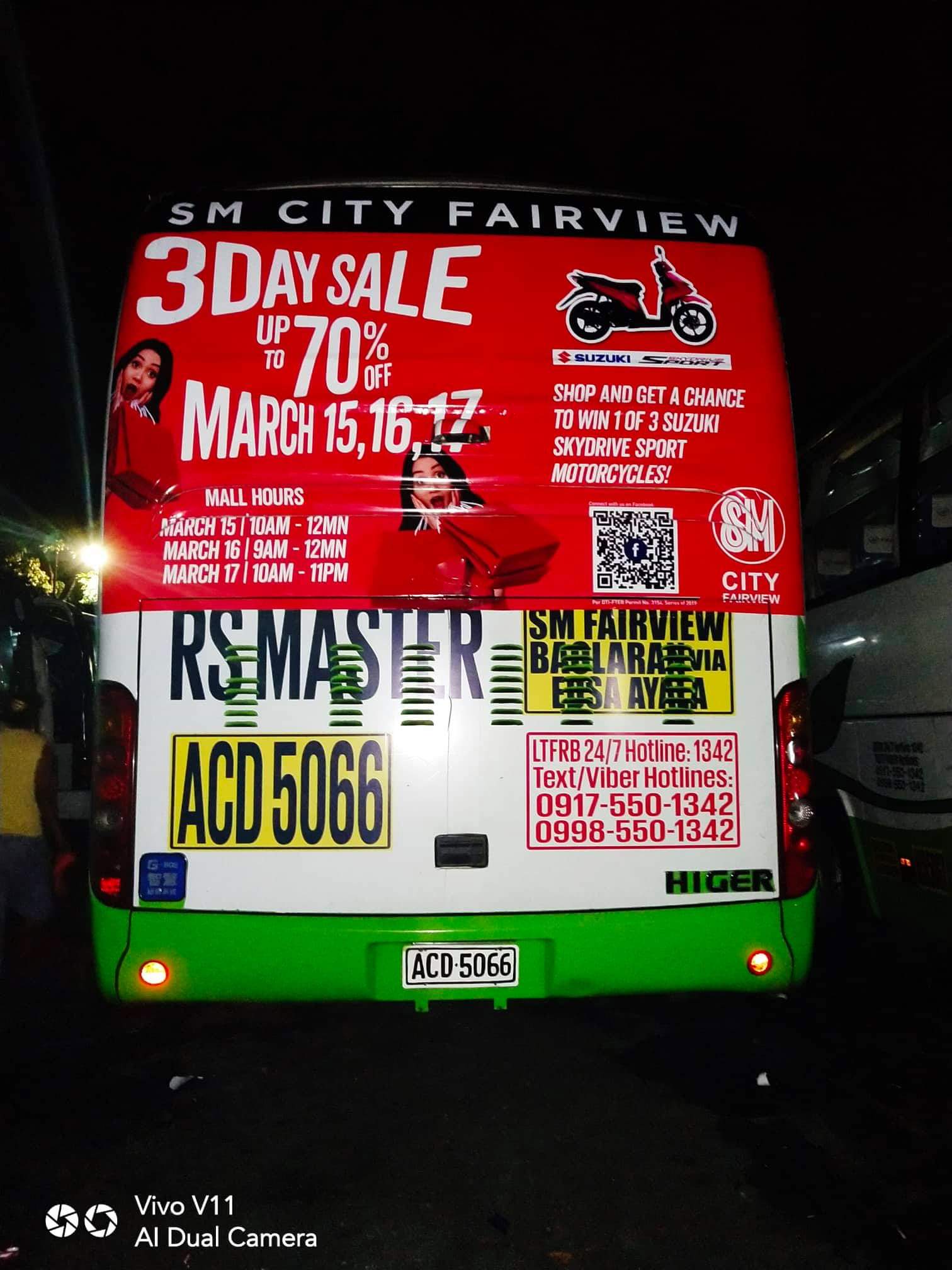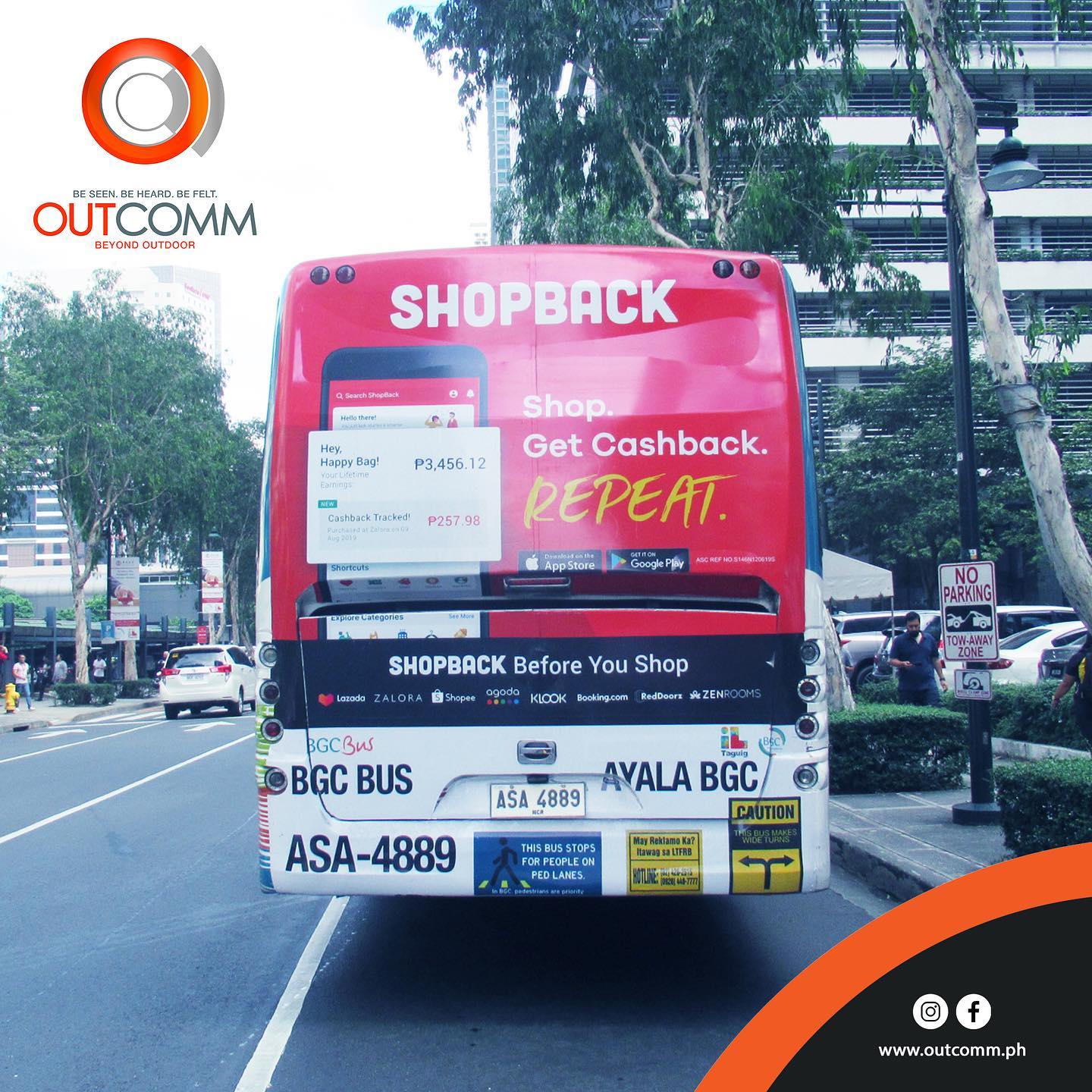Enhance Brand Name Reach with Transit Advertising Philippines
Enhance Brand Name Reach with Transit Advertising Philippines
Blog Article
Recognizing the Function of Transit Marketing in Enhancing Brand Name Exposure and Customer Interaction
Transportation marketing has actually become a critical aspect in the advertising landscape, offering unique possibilities for brands to raise their exposure and involve consumers successfully. With the capability to reach a restricted and diverse target market during their day-to-day commutes, these advertising approaches are not merely concerning presence; they have to do with developing significant links with possible customers. As we discover the diverse benefits and ingenious methods within transit advertising and marketing, it comes to be vital to think about just how these elements jointly influence customer understanding and habits, raising inquiries regarding their long-term effect on brand loyalty.
Meaning of Transportation Advertising And Marketing
Transportation marketing describes the technique of advertising products, services, or brand names with advertisements positioned in and around public transport systems. This form of marketing includes a variety of positionings, including posters on buses and trains, electronic screens at transit terminals, and wraps on the outside of lorries. It aims to get to a diverse target market, taking advantage of the high foot traffic related to public transportation.
Transportation marketing is tactically placed to capture the interest of travelers, who often spend substantial time waiting or taking a trip. By incorporating advertisements right into the daily regimens of individuals, brand names can produce a long-term impact and foster brand name recognition. The tool is particularly reliable in metropolitan settings, where public transportation is a primary setting of traveling.
Additionally, transit advertising and marketing can assist in localized targeting, permitting businesses to get to details demographics based on transportation paths and terminal areas. As urban populations grow and the usage of public transport increases, this advertising method has actually obtained importance as an essential element of integrated marketing strategies. The dynamic nature of transportation advertising, incorporated with its ability to involve customers in a captive atmosphere, emphasizes its importance in contemporary advertising and marketing methods.
Advantages of Transportation Advertising And Marketing
The effectiveness of transportation marketing hinges on its capability to provide a plethora of benefits to brand names seeking to enhance visibility and involvement. One of the primary advantages is the substantial reach it uses; transit ads can successfully target varied demographics throughout city areas, getting to both travelers and pedestrians alike. This wide direct exposure considerably increases brand name recognition.
Another benefit is the high regularity of impacts. As transportation vehicles follow established routes and stop at multiple places, they develop repeated exposure that reinforces brand messages. This frequency promotes experience, which is crucial in customer decision-making.
Transportation marketing is additionally cost-efficient compared to various other media systems. Given its expansive reach and possibility for high impressions, brand names commonly experience a reduced cost per thousand impressions (CPM), optimizing their advertising and marketing budget.
Moreover, transportation advertisements can produce a sense of area connection. By lining up with local transportation systems, brand names can resonate with regional target markets and foster a feeling of neighborhood pride. This localized strategy boosts brand name commitment and involvement, making transit marketing a compelling choice for companies intending to strengthen their existence in the marketplace.

Efficient Strategies for Transportation Projects
To make best use of the influence of transportation projects, brand names need to leverage calculated preparation and execution tailored to their target audience. First, determining the group qualities of the target market making use of public transit is crucial. This enables brands to create customized messaging that resonates with potential customers.
Next, picking the ideal transportation mediums is important. Whether using bus wraps, train posters, or digital displays, each tool has unique advantages that can improve presence. As an example, lively visuals on bus wraps can bring in focus, while electronic ads can be updated regularly to reflect prompt promos.
In addition, integrating a natural branding method throughout transit systems guarantees uniformity and reinforces the brand's identity. Making use of remarkable taglines and eye-catching styles will strengthen brand recall among commuters.
Lastly, timing is a key factor in executing successful transportation projects. Introducing projects during peak travel hours or local events can considerably boost presence and interaction. By utilizing these techniques, brand names can successfully harness the capacity of transit marketing, fostering higher awareness and connection with their target market. Ultimately, a well-executed transportation campaign can drive significant development in brand presence and consumer engagement.

Determining Influence and Involvement
In examining the efficiency of transit marketing campaign, exact measurement of influence and engagement is vital for brands looking for to enhance their advertising techniques. Metrics such as reach, regularity, and perceptions supply fundamental data to analyze visibility. Analyzing these elements assists identify the number of prospective clients are exposed to the advertisements throughout their daily commutes.
Involvement can be more assessed through customer communications, such as site traffic, social media points out, and direct actions to calls-to-action featured in the advertisements. Making use of tools like QR codes or one-of-a-kind Links can assist in monitoring of consumer habits directly linked to transit campaigns. Surveys and comments mechanisms additionally work as valuable approaches to collect qualitative data on consumer understandings and recall of the advertisement.
Additionally, progressed analytics and attribution designs can associate transit direct exposure with subsequent purchasing actions, using understandings right into the return on investment. By employing an extensive approach that incorporates quantitative and qualitative actions, brands can develop a nuanced understanding of their transit advertising impact. Ultimately, this data-driven approach enables brands to fine-tune their campaigns, guaranteeing they resonate successfully with target market and enhance overall brand exposure.
Situation Researches of Effective Projects
Effective transportation marketing campaign serve as engaging examples of exactly how effective strategies can elevate brand name presence and interaction. Transit Advertising Philippines. One noteworthy case is the "I Love New york city" project, which changed the city's picture and attracted countless tourists. By making use of subway advertisements, signboards, and bus covers, the project developed a solid, natural brand identification, resulting in a significant uptick in tourism and regional business patronage
One more exemplary investigate this site project is Coca-Cola's "Share a Coke" Get More Info initiative, which leveraged transportation marketing to personalize the brand experience. By featuring popular names on marketing products across different transit systems, Coca-Cola cultivated a deeper psychological link with customers, motivating them to share their experiences on social networks.
Furthermore, the "Got Milk?" campaign successfully used mass transit advertisements to reach a broad audience, reinforcing the message of the importance of milk in a balanced diet regimen. The project saw a quantifiable boost in milk usage in target demographics.
These study highlight that when implemented attentively, transit advertising can considerably enhance brand name exposure, foster customer interaction, and drive quantifiable outcomes, demonstrating its essential role in contemporary marketing approaches. - Transit Advertising Philippines
Conclusion
In conclusion, transportation advertising serves as an important tool for improving brand name visibility and fostering customer engagement. Inevitably, the capability to determine involvement and evaluate successful instance research studies emphasizes the effectiveness of transportation marketing in driving brand name commitment and consumer communications.
Transportation advertising has arised as a critical element in the advertising landscape, using distinct opportunities for brand names to raise their presence and involve consumers efficiently.Furthermore, transportation great site marketing can assist in localized targeting, permitting organizations to reach particular demographics based on transit paths and station areas.In assessing the efficiency of transit advertising and marketing projects, precise measurement of effect and interaction is important for brands seeking to maximize their marketing strategies.Successful transit advertising campaigns offer as compelling examples of just how efficient techniques can elevate brand visibility and engagement.In conclusion, transportation marketing offers as an essential tool for enhancing brand name exposure and promoting consumer interaction.
Report this page